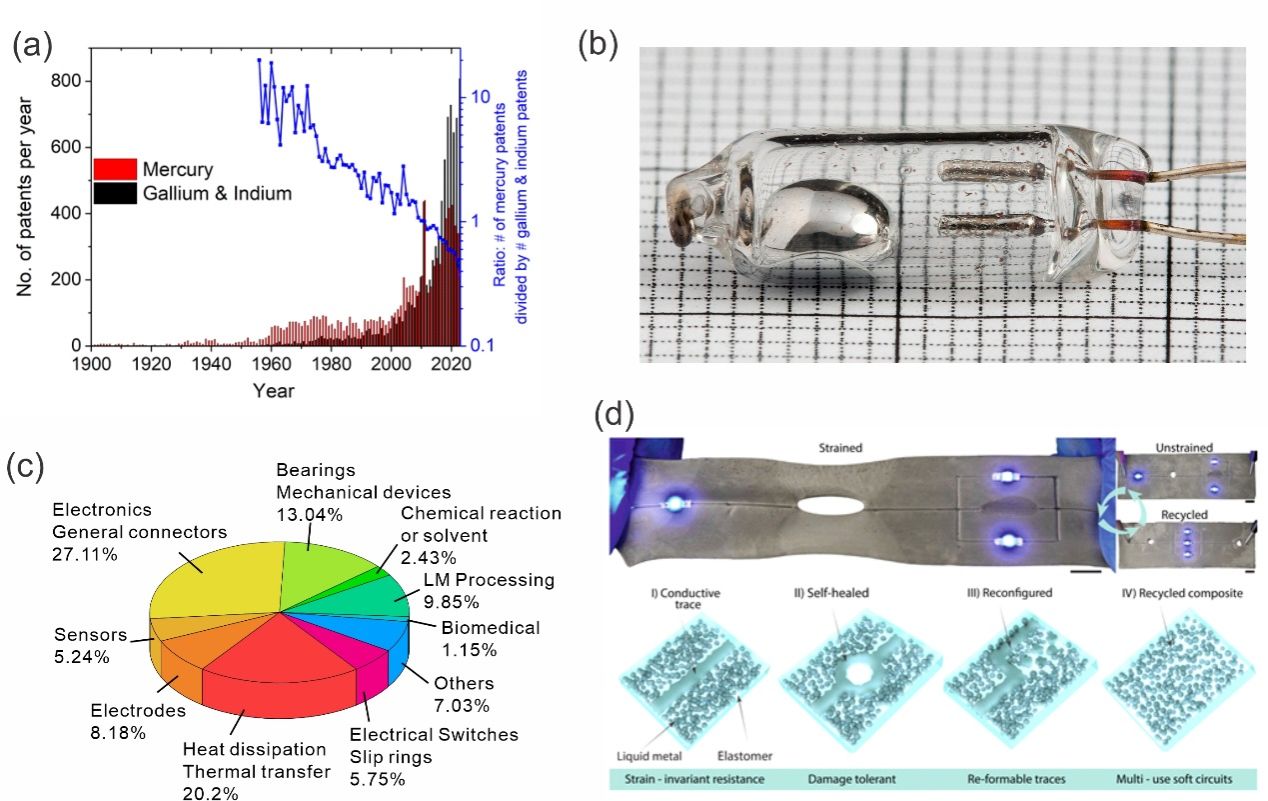Recently, the research team surrounding Stephan Wang in conjunction with domestic and international collaborators from USA (Prof. Michael D. Dickey, North Carolina State University), Poland (Prof. Tomasz Gancarz, Polish Academy of Sciences), and Saudi Arabia (Prof. Florian J. Stadler, King Fahd University of Petroleum and Minerals) have published a meta-analysis on liquid metals pertaining their commercialization entitled “The liquid metal age: A transition from Hg to Ga” in the prestigious journalAdvanced Materials(impact factor 27.4).
Liquid metals are metals and alloys in the liquid state at or near room temperature while broadly maintaining the “metal character” of their solid counterparts, namely, high thermal and electrical conductivity, and being endowed with many more elusive unique properties, such as chemical reactivity. Representatives of liquid metals are the toxic mercury and less-toxic gallium alloys. These liquid metals are used extensively in research, but it is often difficult to come by solid evidence for commercial products.
The article discusses the historical evolution and modern applications of liquid metals. This discussion begins with the process from the widespread use of mercury to the mainstream use of gallium and its alloys, which is illustrated by the decline of patents using mercury compared to gallium alloys in Figure 1a. Furthermore, the article discusses current regions of application (Figure 1c) and gives a broad overview of current and future applications, such as electrical switching (Figure 1b), mechanical applications, electrodes, sensors, chemical synthesis, energy storage, heat transfer, stretchable electronics (Figure 1d), and biomedicine. In this connection, advantages and drawbacks of using liquid metals are discussed and bottlenecks pertaining to commercialization, such as corrosion, stability, cost, and fabrication issues delineated.
The article concludes with an outlook on future applications of liquid metals. Especially, chemical synthesis/catalysis, stretchable electronic, heat transport, and biomedical fields are pointed out as interesting research fields with promising growth potential once the technology is mature.

Figure 1. (a) Number of annually published patents on mercury and gallium-based liquid metals. (b) A liquid metal switch filled mercury. (c) Pie chart pertaining to the application fields employing the liquid metal galinstan and their relative abundance. (d) Liquid metal self-healable and stretchable electronics.
Link to the scientific review article: https://doi.org/10.1002/adma.202408466